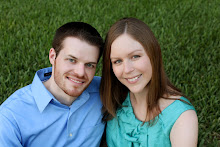From
J:
For Christmas this year, I decided to make cutting boards for gifts. End grain cutting boards (Boos blocks, etc) are the best cutting boards money can buy, and they tend to be pretty expensive for good ones. Luckily, they aren't too expensive to make, if you don't count time. They take forever to sand. Anyway...first step, buy some hard maple. Hard maple has a dense end grain structure that isn't very porous so the board won't soak up excess water or food juice too readily. I bought a board of 6/4 (1.5" thick in its rough state) hard maple, about 6 feet long. SUV for the win.
 |
| $75 of wood. |
Next step: cut up the board. This was a challenge. I built a cross-cut sled that rides in the miter slots of the table saw, lifting the board off of the table so that it can slide easily (and safely) across the blade. Still, this entire assembly (~75 lbs) weighs way more than my lightweight saw (~50 lbs) so I had to be veeeeery careful not to rock the saw on the first few cuts until the weight became more manageable.
 |
| Fun fact, my airborne dust filter is a box fan with a furnace filter attached on the intake with bungee cords. |
Next, the boards get cut into strips and turned on end. Apply glue (food safe and waterproof) and clamp. Wait 12 hours/overnight. I eventually got better at the clamping and made my life much easier in the finishing step by clamping multiple cauls across the strips during glueup to keep the board flat.
 |
| Strip glueup (before I knew to use cauls). |
 |
| Checkerboard glueup. Really should have used cauls. |
 |
| With cauls. Eight clamps in use for one board. |
After the glue up, I ripped the edges straight on the table saw (this took yet another jig, as the board is longer than the working area in front of the blade on the table saw). Then, it's time for flattening and sanding. So much sanding. End grain is incredibly tough to sand, especially on something as hard as hard maple. The good boards took 2-3 hours of planing with my
block plane and sanding with 40 grit, which is basically gravel on a sheet. The earlier boards, which weren't glued up as flat (learning curve...) took longer. But in the end, they look pretty good! I rounded over the edges with the router.
 |
| Dusty and proud. |
I made different patterns on the different boards. Two are checkerboarded (for a big-and-small board set) some are bookmatched so the grain patterns are mirror images, and some are in strips with the grain facing the same way across the board. For the wifey's board, I used a section of the maple that was knotty and burled which gives some really pretty patterning in the end product. Everything was finished with three coats of mineral oil.
Total project cost: ~$15/board, including consumables and mineral oil. My time is free for family and friends, Merry Christmas!
















Love love love mine- almost too pretty to use but J insists. I will certainly enjoy it.
ReplyDelete